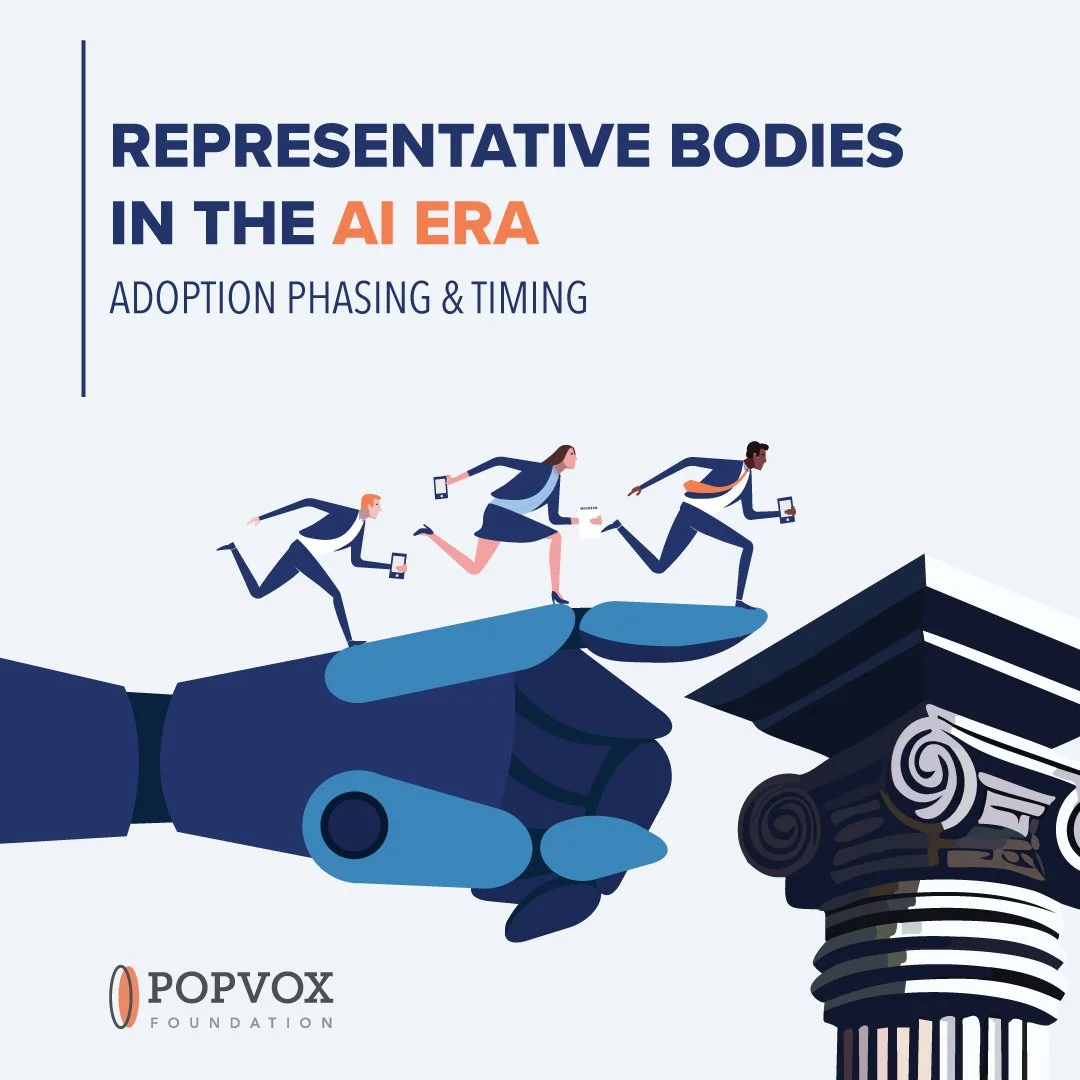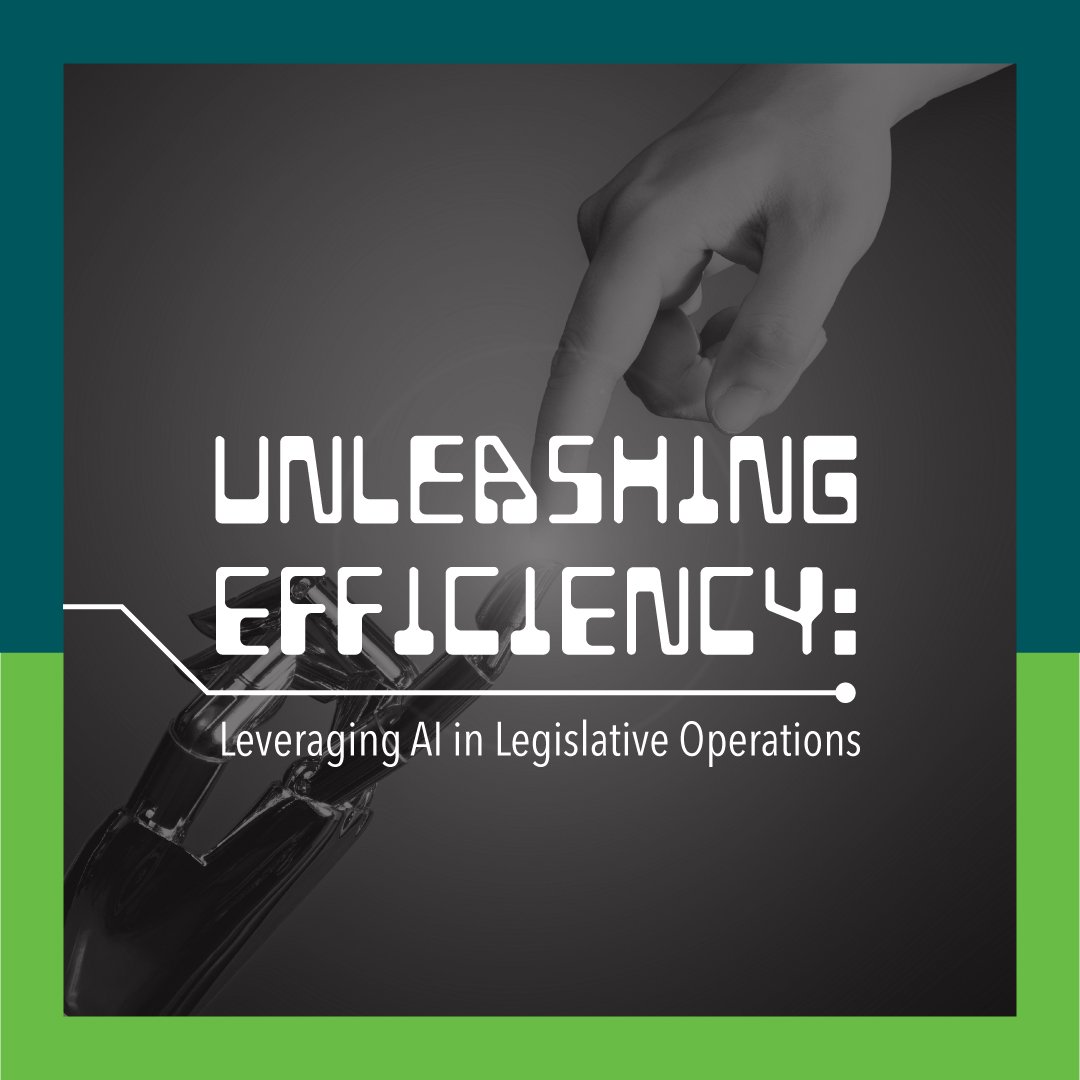
Representative Bodies in the AI Era
Insights for Legislatures
Representative Bodies in the AI Era
Representative Bodies in the AI Era was developed by POPVOX Foundation to guide the US Congress and legislatures around the world on adopting artificial intelligence (AI) to modernize their internal operations and address the "pacing problem," a term coined to describe the lag between technological advancements and the development of laws and regulations governing them.
“Insights for Legislatures,” the first of a multi-volume series authored by POPVOX Foundation Cofounder and Executive Director Marci Harris and Director of Government Innovation Aubrey Wilson, is a definitive reference text on how legislatures can close that strategic gap and adopt AI technologies in their workflows. Written primarily for legislators and their staff, the in-depth report is an accessible explainer with international use-case scenarios and recommendations to inform responsible AI deployment, with a primary focus on the US Congress.
Executive Summary
This report provides an overview of how artificial intelligence (AI) technologies have been gradually adopted in the legislative workflows of parliaments globally over the past decades. It focuses primarily on developments in the US Congress in areas like predictive modeling, machine learning, natural language processing, computer vision, and speech recognition. It also highlights examples of AI adoption internationally, including projects in Argentina, Brazil, Estonia, the European Parliament, Finland, India, Italy, Singapore, and Taiwan.
The recent emergence of generative AI (GenAI) is addressed — highlighting its potential to augment efficiency and effectiveness in lawmaking processes while acknowledging that these benefits raise complex questions.
The report describes actions taken in the US House and Senate to allow for cautious exploration and experimentation with GenAI. Both chambers have established AI working groups and issued initial guidance on responsible AI adoption.
Emerging workflow disruptions signal more significant impending impacts and underscore the need for technical investments and capacity building within legislatures.
The report makes several recommendations for legislative bodies planning for their own AI adoption:
Immediate: Enable experimentation; foster sharing
Short-term: Conduct expert studies; advocate prototype development
Medium-term: Invest in integration and automation initiatives
Long-term: Revolutionize constituent engagement and oversight leveraging custom models
It further advises formulating agile guidelines, promoting inclusive dialogue, adopting phased strategies, upskilling staff, ensuring human oversight of AI systems, and participating in international collaboration.
By prudently leveraging AI, representative bodies can take steps to maintain pace with a rapidly changing society, meet rising public expectations, and improve the responsiveness, effectiveness, and relevance of democratic institutions in this new AI era.
Part I: Overview and Examples of AI Adoption in Legislatures
Part II: Initial Lessons, Emerging Frameworks & Recommendations for Phased Adoption
Additional Resources



















